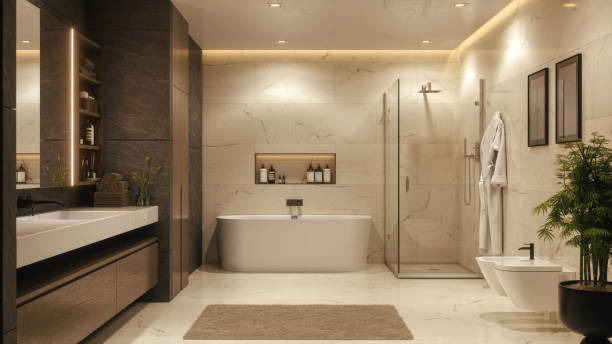
Glazes are available in a variety of shades and textures. They are poured onto the surface of a ceramic item to seal and decorate it.
A glaze is a mixture of colors, frits (or sand) as well as ceramic materials. It is a mixture that is melted in a kiln, then quenched and then ground to a specific mesh size.
Engobe Tile Glazing
The engobe is a fine slip that lies between the glaze and the body. It is generally applied before the glaze, often as a decorative brush to enclose it. Engobe can cover the color of the tile body and hide imperfections on the surface (like those caused by iron impurities) or seal an otherwise soft and porous clay, and also serve as a whiter foundation to enhance the color of the glaze.
The recipe should be similar to that of the body to which it will be applied. There should be littlefrit added. To maintain opacity, they should be low in flux. In excess flux can raise the firing temperature and cause stress between the engobe, the body beneath, and their marriage.
This is a problem that occurs frequently which can be caused by applying an engobe on dry ware and then glazing it. The engobe should be applied when the leather-hard stage is attained. The body-like makeup of the engobe allows the creation of a bond made of plastic (fire-matching shrinkage, COE and body-matching) to form during drying.
Glaze is a mix of made of powdered materials that, once dried and fired, fuse into gach viglacera 30×60 a glassy surface. Glazes can be applied by spraying on or dipping into. They are designed to adhere with the surface of the clay in a point known as the Clay-Glaze Interface. After drying, the slurry particles are drawn closer and shrink. glassy bodies shrinking more than other.
Digital Inkjet Printing Tiles
Inkjet technology is utilized by a variety of printers at workplace and home to create photos of high-quality. Ceramic tile makers are making use of the same technology to create patterns and designs to add beauty to the look of interior spaces.
This method uses a specially-formulated ceramic digital printing ink which can withstand the high temperatures of firing ceramics. The patterns printed remain vibrant and vivid when the ceramics are glazed and fired. With this method, designers can make tiles that mimic the appearance of natural materials. This includes wood-look tiles, stone-inspired colors, and abstract designs.
Ceramic digital printing is also an ideal choice for companies who want to boost efficiency and reduce costs for production. Digital printing device eliminates the requirement for complicated and expensive equipment such as rollers and silk screens, making it a more efficient alternative to traditional methods. Digital inkjet printing can also print smaller quantities than custom screen printing and rotocolor. This can reduce inventory and storage requirements.
LOPO uses a leading Italian digital printer to produce unique, high-quality designs for Terracotta. The LOPO 3D Inkjet Printing Tile Series, which blends top-quality ceramic digital printing ink with the latest printers to create extremely creative patterns, replicates natural textures, such as marble and wood.
Crystalline Glaze Tiles
Crystalline glazes are a type of decoration for the surface of ceramic pieces. The glaze’s surface is created with a unique crystal structure by using frits, colors and a low firing temperature with the slow rate of cooling. These crystal structures are popular in modern designs because of their unique appearance and long-lasting. This technique is most commonly employed to make high-end ceramic floor tiles. However, it could also be employed for other kinds of pottery.
The tribological properties of four different glazes were tested using the analytical tests (thermal analysis and Vickers hardness), as well as technological ones (surface-abrasion test). The studied glazes were obtained from commercial products manufactured by Colorobbia Italia S.p.A, Fiorano Modenese, Modena, Italy and were made using the recipes listed in Table 1.
For the purpose of conducting the test of abrasion on surfaces, 30 x 30 cm unfired tile bodies were coated with glaze and engobe slurries with an average density of 1470 kg/m3 by airless application. Then, the decorative patterns were printed onto the engobe layer with a digital printer. The slurries are single-fired with a heating rate 30 degC/min at a peak temperature 1205 degrees Celsius. The resulting disks were then dry-cleaned and ground to a particle size smaller than 0.063 millimeters, and then examined by X-ray diffraction (XRD) on an Empyrean Series III, Malvern Panalytical Ltd., Malvern, UK.
Lappato Finish Tiles
Lappato finishes are a sophisticated middle path between polished and matte tile finishes, striking a balance that creates visual depth, while keeping the its surface texture. The technique uses selective abrasion to partially polish tiles. This leaves some with a shiny sheen, while others remain matte, creating a distinct appearance that reflects light but doesn’teliminate the texture. The unique blend of texture and shine adds the look of interiors, but it requires extra care.
The quality of diamond lapato abrasives is crucial to the effectiveness of this technique for finishing. The durability of premium diamond abrasives (typically a 10 on the Mohs scale) surpasses that of ceramic tile surfaces that allow for efficient and controlled material removal without excessive wear on the abrasive tools themselves. Water lubrication is also a great way to control temperature and prevent excessive heat.
When selecting abrasives for this task, it’s crucial to take into account the size of the particles of each diamond component. The larger diamond particles produce more of a textured look and the diamonds with finer particles provide a smoother finish. Achieving a consistent lappato finish is also influenced by the kind of bonding that is used to secure diamonds to the abrasive tool. Resin-bonded diamonds are superior in performance, while diamonds that are metal-bonded provide longer-lasting durability.
After abrasive treatment is completed, the lappato finish tiles should be thoroughly cleaned using a pH-neutral cleaner to remove polishing residue and prepare the surfaces for grouting. A simple test of water break can also be used to determine the consistency of the tile and to ensure that the abrasive treatment is producing a texture that is uniform. Sprinkle a small amount of clean water on the surface. It should spread evenly and should not crack, showing that the tile has been treated uniformly.


